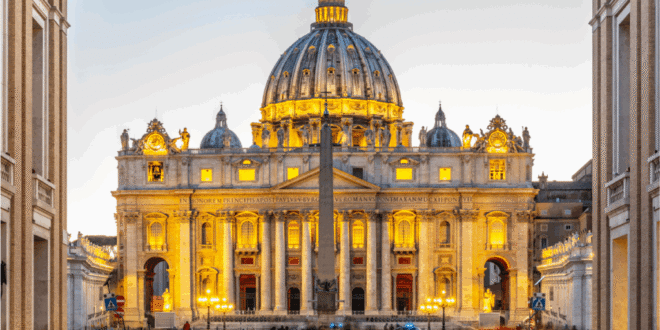Vatican City runs on 100% solar power. Credit: Petr Polan
Many people wouldn’t expect the world’s smallest country with fewer that 1,000 residents to be at the forefront of the global energy discussion. The Vatican City will have a much larger impact than its size in 2025. Solar power will be used exclusively. It is an important moment in time, not only in terms policy, but also in principles, that the Catholic Church will now run on almost all clean energy. This echoes Pope Francis ‘ long-standing views on environmental stewardship and climate responsibility. It’s not just about the rooftop panels. It’s about the way science, sustainability and faith can coexist, setting the pace for other countries to follow.
Vatican City uses solar energy
The Vatican City will officially switch to solar energy on May 29, 2025. This marks a major shift in European energy. Santa Maria di Galeria is the heart of this transformation, an old Vatican Radio site which has been converted into a hub for solar energy. The project was completed by ACEA, a utility company in Italy, who installed systems that met all the Vatican’s needs for energy.
It is not just the size that matters, but also that Vatican City is only 0.49km²No loud campaign was conducted, there was no press tour. The action taken had to be done. A state with a deep tradition has made one of the most innovative energy transitions.
Pope Francis’ climate crusade
The Vatican’s shift to solar power is the culmination of years of political and spiritual work. In 2024 the late Pope Francis sent an apostolic message ordering the construction an agrivoltaic plant to supply energy from Santa Maria di Galeria to the Vatican. Now, the solar infrastructure stands on the same location.
By May 29, 2025, this vision had been realized, and the Vatican City was one of only a few fully solar-powered countries in the world. This set a precedent for how sustainability and belief can be aligned.
More than just panels, the Vatican has announced that it will buy over 40 electric cars from Volkswagen in 2023 to create a completely carbon-neutral vehicle fleet by 2030. This push is not only for energy independence but also to ensure efficiency, viability, sustainability, even on a national scale.
Why this is important
The Vatican, a small country with a large population, has demonstrated that it can be a leader who takes clear decisions and then quietly acts. While solar adoption continues to lag behind across Europe, many countries are still struggling. Electric vehicles (EVs), which already outnumber petrol-powered cars in Norway, are also a growing trend. In Spain, EV chargers number thousands but they remain unused.
If the smallest nation on Earth is able to go solar, then what’s stopping the rest? When someone claims that climate change is too complex, expensive, or slow, simply point them towards the city of saints. This time, light truly came from above.
 Costa News Spain Breaking News | English News in Spain.
Costa News Spain Breaking News | English News in Spain.





